I. The Worst Person in the World
II. Short takes
III. Porcelain
IV. The Power of the Dog
V. Sidecars
Is there something I should watch? Let me know.
I interviewed the Norwegian director Joachim Trier, whose new film THE WORST PERSON IN THE WORLD features a meet-cute that will probably go down in the annals of fictional romances. Starts today at Lincoln Center.
FRIENDS ARE BETTER THAN LOVERS
POISON IVY (1992): Only the Bagel Bites jingle is more emblematic of the 90s than this movie. Young Drew Barrymore and Sara Gilbert star as mismatched teenybopper friends: the former a femme fatale siren and the latter as the brooding, possible-lesbian. Fried hair, grunge vests (whoever thought that was a good look?), and cheap taffeta abound. The anxieties and preoccupations of high school overlap with those of film noir: both are fueled by resentments and jealousies. Director Katt Shea takes things a little too seriously, giving this the unfortunate sweep of a soap or LifeTime movie.
BAD INFLUENCE (1990): Strangers on a Train-formatted thriller plunked into hip-modern LA. Like the devil on your shoulder, a cool but unscrupulous friend coaxes you into dangerous shenanigans. That’s what happens when sniveling yuppie James Spader meets enigmatic stranger Rob Lowe, who’s only ever filmed in the dark shadows and turns out to be unhinged sociopath. His botox-ed smile in Parks and Rec now takes on new meaning.
BEANPOLE (2019): The burnished colors in this Russian film are so lurid that they make me lose my appetite. The palette is that of queasy Christmas viewed through Apple’s night shift mode, the hues and their accompanying moods traded back and forth between the characters. A wretched gold stains the actors’ faces, making them look like gaunt canaries glowing by hearth-light. Crimson signals violence, of course, and a lust for life. Meanwhile green, more like astroturf than real verdure here, suggests false hope and underscores the barrenness of the whole hardscrabble situation—Ilya and Masha, two friends, eke out a living in war-torn Leningrad.
The film’s young director, Kantemir Bagalov, maps the country’s plight onto the women and their bodies, as they try to bring life into a ravaged world. The movie mimics Cristi Piu’s 4 months, 3 days, 2 weeks by staging a scene of something societally taboo in a shabby room underlining how man is both instigator and solution to the problem, all while her best friend peers over with emotional support. Despite some agonizing imagery, the film is humanistic in its depiction of a codependent relationship in a world where death often seems like the better alternative.
I recently caught up with a friend at the Korean/Chinese-ish Porcelain, which just switched over to dinner-service only. If you go, you’ll find it either dead empty or pleasantly abuzz. We accidentally over-ordered, not realizing the portion-to-price ratio aired on the side of generous—a happy accident since I had walked 20 minutes the wrong way on Myrtle Ave before realizing my mistake because I refuse to rely on my phone. We feasted on soondae wontons (I had these at Sam Wo Han in SF; a trend?); a bowl of wheat noodles studded with pumpkin (an underdeveloped but homey dish); and a silky cashew curry that we scooped up with fried cruellers. Occasionally I’d spoon it onto the rice that came with the show-stopper pork chop, fried and dusted with nori. Slices, many of them, come hidden beneath a mound of sweet raw white onions, crisped basil, and, my favorite, pickled greens with the right amount of sour. A foreboding green chili pepper rests on top.
The thing I missed though, at this endearingly creaky Ridgewood establishment (whose molded ceilings and winding bar served as the backdrop for The Irishman) was the mochi coffee cake previously offered in the mornings. It did away with the most elemental, and most unappetizing, part of the snacky dessert: its crumbliness. The genius baker got rid of coffee cake’s shambolic structure and replaced it with the decidedly ‘qq’ texture of rice flour, addictively springy and only faintly kissed by arabica.
THE POWER OF THE DOG
Jane Campion
All but one or two bulls are castrated on a ranch, and similarly there seems to be room for only one male ego among the humans on the Burbank farmstead, the central setting of The Power of The Dog. As the head rancher Phil, Benedict Cumberbatch is a charismatic and terrorizing force. He wields his masculinity like a toreador's cape or magic wand, riling up attention only to banish it immediately. A true showman, Phil commandeers the spotlight, but the story soon makes us privy to his secrets.
Based on a 1968 novel by Thomas Savage and set in 1920s Montana, The Power of the Dog skewers traditional gender conceits and genre-myths of the West while metaphorizing a psalm from the Bible, the 22nd one specifically, from which it takes its title. Don’t read too much into it until you’ve seen the film. While it’s Jane Campion’s first to feature a male protagonist, the movie still traffics in her favored, and finely-honed, themes, like the clash of feminine and masculine forces and how violence edges closely behind desire.
Phil oversees the family ranch with his brother John (Jesse Plemons), his kinder, rounder complement. The balance of their bachelor life comes under siege when John marries a lovely inn-keeper/restaurant-proprietor named Rose. Phil begins to terrorize his new sister-in-law (Kirsten Dunst, at her tremulous best) and her teenage son Peter (Kodi Smit-McPhee, with a mile-long stare) a gawky hula-hooping fellow, the kind endowed with bookishness instead of hand-eye coordination.
So often heard before he is seen—a creaking door, his spur-and-boot footfall—Phil’s psychological imposition drives Rose to the bottle. Without lifting a finger he telegraphs his rage with taut scowls, his disgust with quick, trenchant remarks. If you’ve lived in the anxious presence and discomfort of someone else, you’ll recognize the feeling.
“He’s just a man. Only another man,” Rose tells her husband. Phil and his mere presence, as crushing as the Montana landscape is expansive, dwarfs her spirit. Campion choreographs interiority vis-a-vis nature, the character’s temperaments mapped onto the mountains and hills. Cinematographer Ari Wenger captures the landscape’s beauty and menace with New Zealand subbing in for big sky country.
Traces of the feminine are scattered through the film: a garden flower, a paper rose, a nesting family of birds. More than embellishments, these small but potent images are talismans of potential rebirth, reminders of hope.
Similarly food also becomes totemic, representing the opposite of industry. It is a delicate balm. Dunst’s character carefully pulls out porcelain cups out of the horse-drawn cart for a coffee break, and when she’s robbed of her kitchen duties in her new house, run by a maid and housekeeper, she’s at a loss.
Rose and John meet early on in the film, when she’s tasked with preparing dinner for all the ranch hands who’ve stumbled into her inn. She makes fried chicken, at their request. Fried chicken is not what comes to mind when I think of Montana cuisine, and I would feel remiss to delve into a dish that is so emblematic of the South for this pairing.
So I turn my attention instead to oranges. Slices of them decorate the coupe glasses at a party John hosts to introduce Rose to Montana society. I’ve been trying to identify what drink he’s chosen to serve to his esteemed guests. The addition of a citrus wedge, not a twist, plus the umbrella is reminiscent of tiki-drinks, but those didn’t come into prominence until about a decade after the film takes place.
My rather amateur guess is a sidecar, a boozy and citrus-forward cocktail that captures a bit of societal elegance. According to its unconfirmed origin story, it hails from either Paris or London. Oranges were a scarce treat at the time, so the cheery fruit would still prove transportive and exotic, worth of the umbrella.
UPDATE: looks like the drink in question is an Orange Blossom, identified of course by the estimable Robert Simonson. Mystery solved. h/t to @bar_marv
When I drink this, I go easy on the lemon though, my stomach can’t handle the acid.
Sidecar
1 ½ oz. cognac (get the good stuff, VSOP)
¾ oz. Cointreau
¾ oz. lemon juice
Add ingredients to a shaker with ice and shake until well-chilled.
Strain into a coupe glass.
Garnish with an orange twist — or an orange wedge and paper parasol.
Bonus: If you did want fried chicken and a classic cocktail, as I did while writing this up, you can’t do much better than heading to Yafa Deli, the Clinton Hill bodega where they sell it crisped, piecemeal, and bringing it down the street to Famous Last Words. Sitting on an otherwise empty stretch of Fulton, the cocktail bar has a vaguely tropical feel and slings some rather stiff drinks, classics indlued.
I leave you with this still from Claude Chabrol’s Bluebeard, which is how I feel entering into another cold weekend.


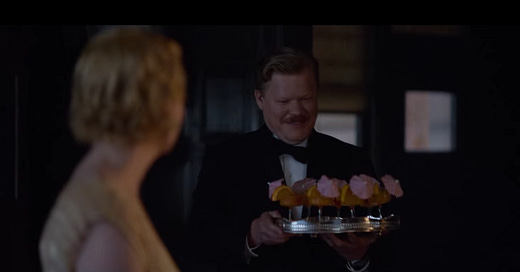


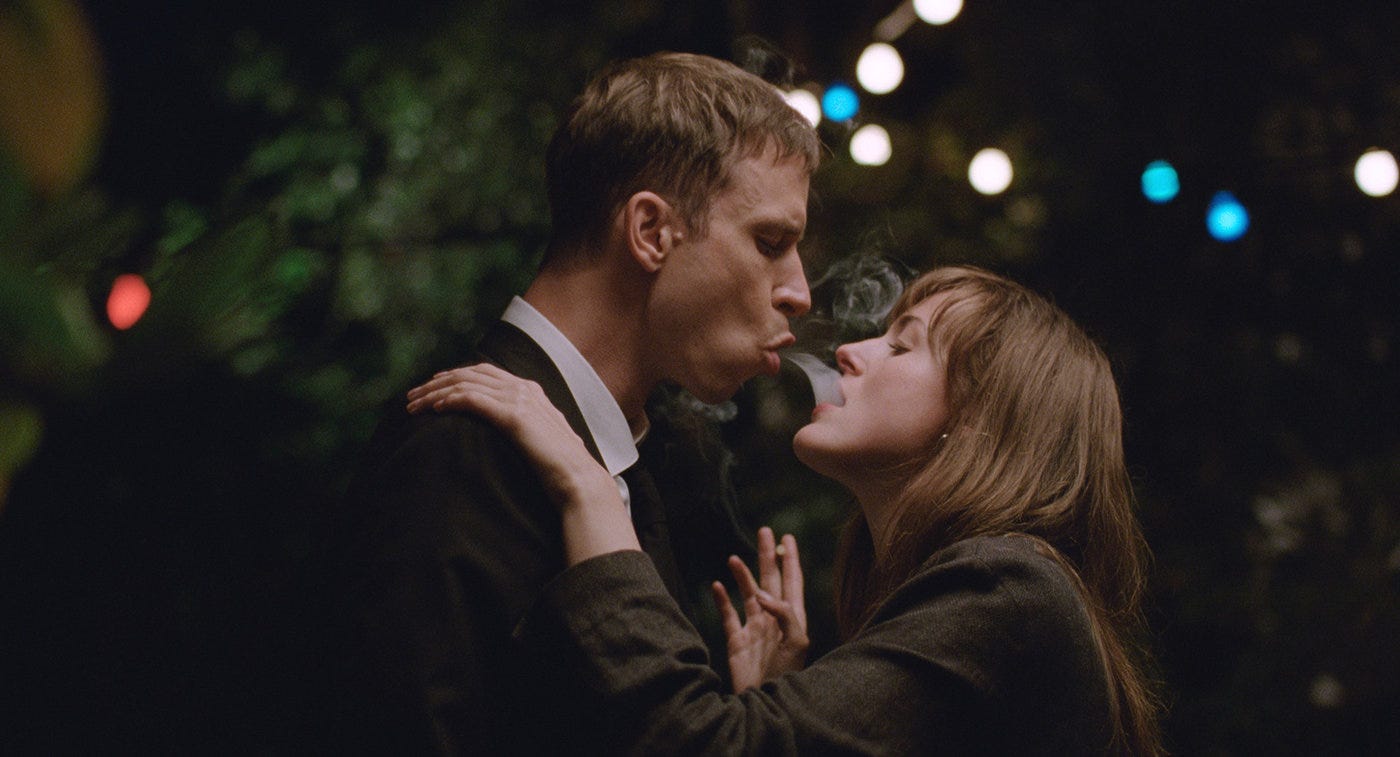
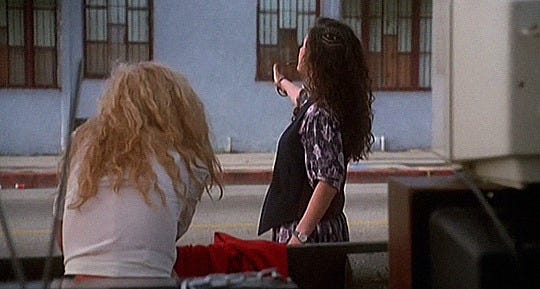
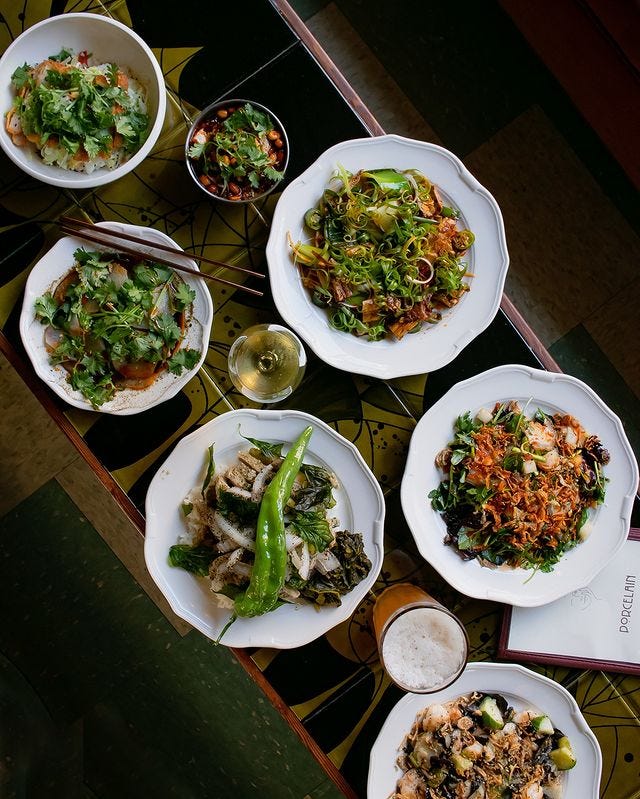
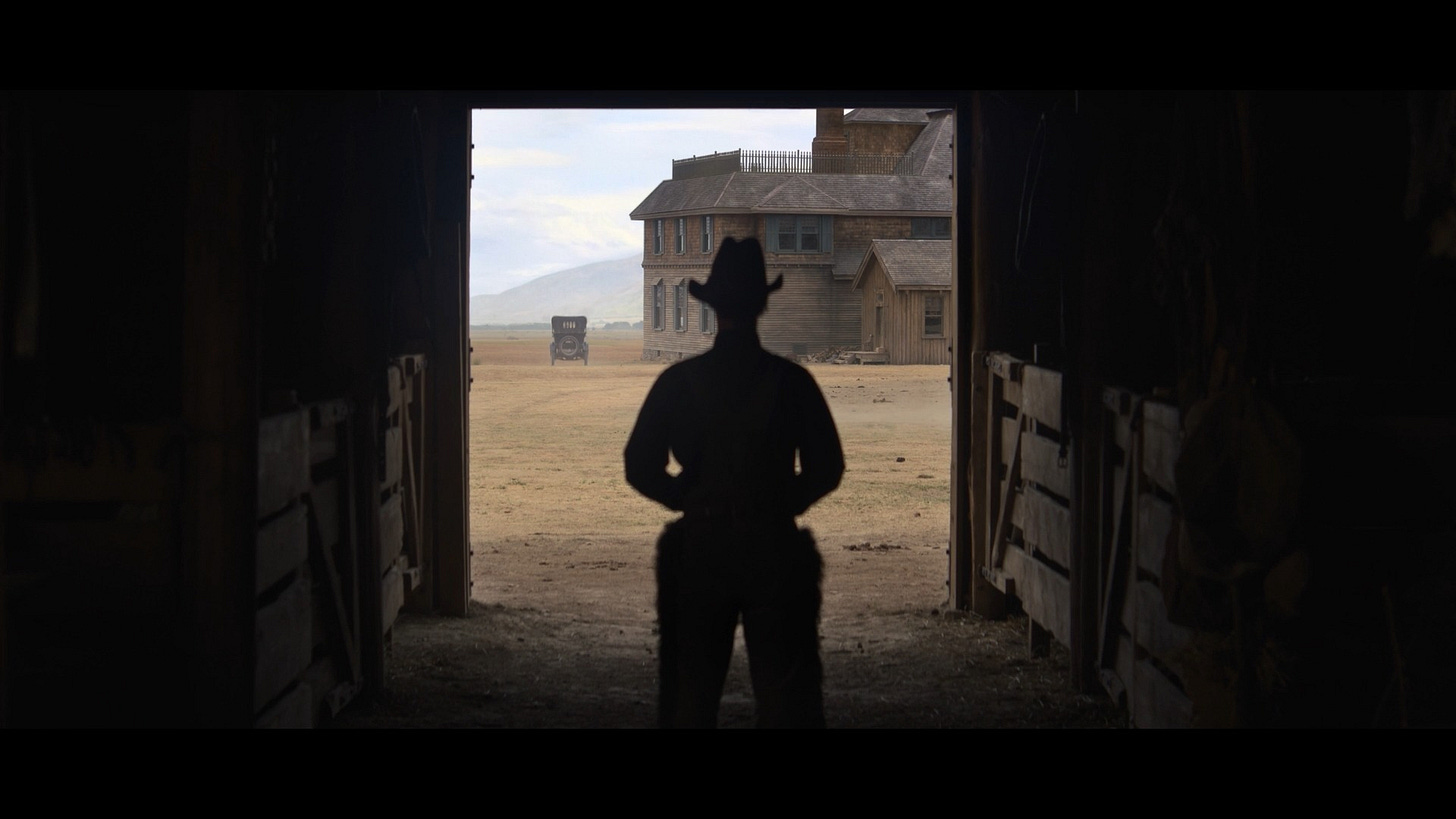
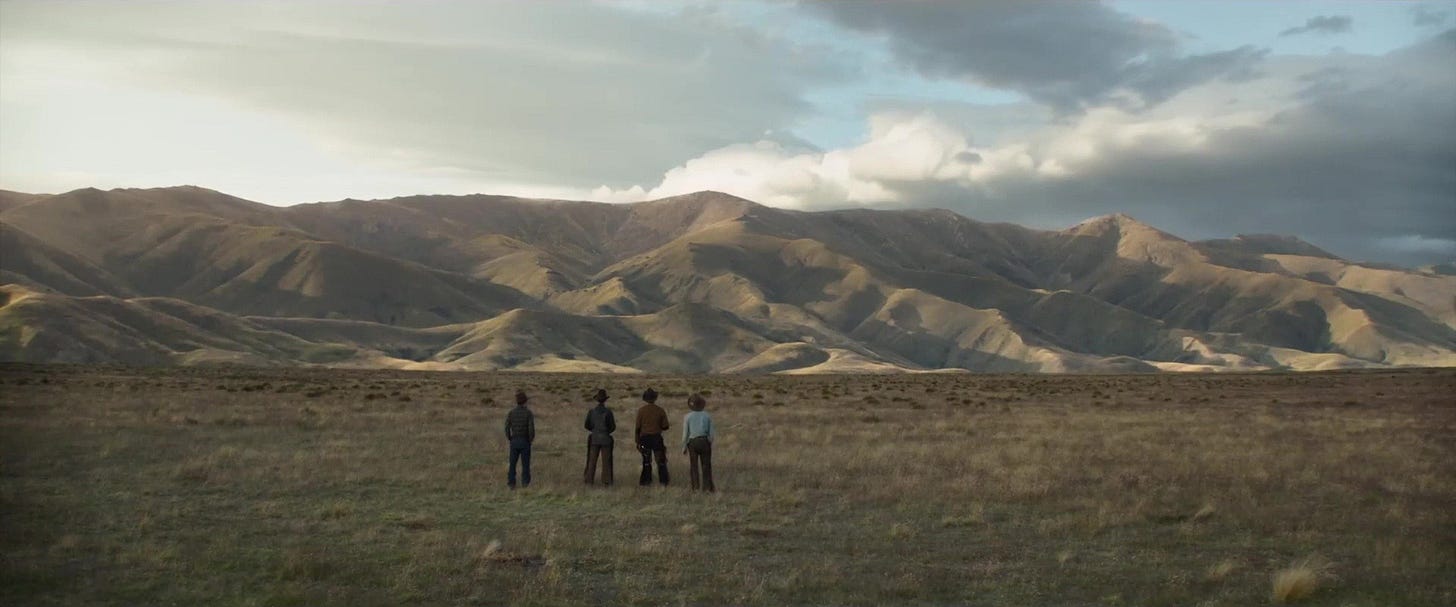
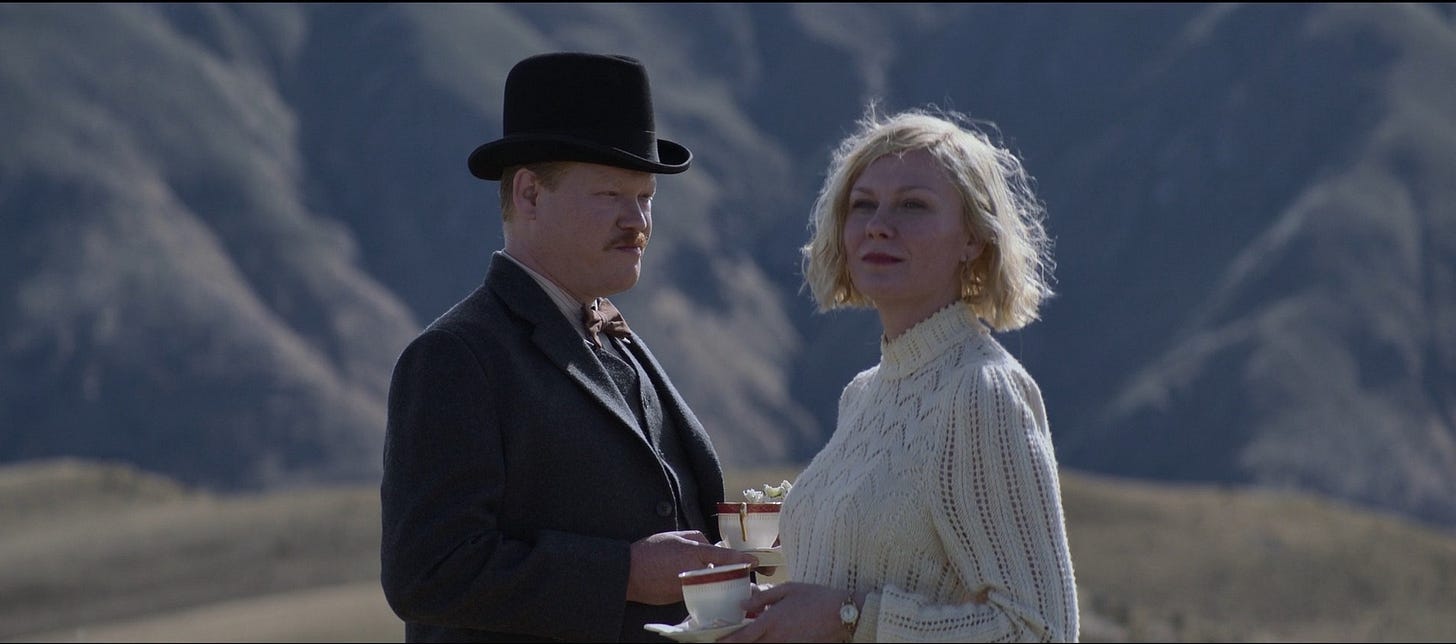



Ok, I've been thinking about this for the last few days and I have 3 offerings and 1 question.
Frankly what we see on screen looks like an optimistic amount of orange juice for 1925 Montana, but there are 3 other period appropriate OJ cocktails that would be plausible:
1) The Bebbo (gin, honey, lemon, OJ) named after 1920s flapper slang
2) Blood and Sand (scotch, OJ, cherry brandy, sweet vermouth) named after a 1922 movie
3) The Monkey Gland (gin, OK, grenadine, pastis) which inspired the 1923 song, "Made a Monkey Out of Me"
Despite solid performances, I felt Rose and George were pretty flat characters that needed a little more development to make Rose's demise believable. If you had 10 more minutes of the film, where would you have added to the story?